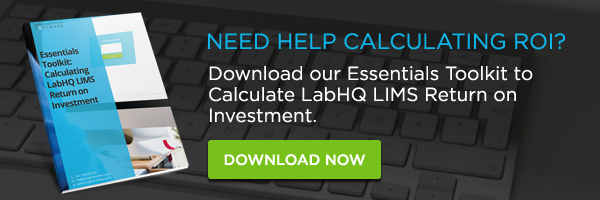
Many laboratories have yet to make the leap from paper to electronic records such as LIMS. There are usually valid reasons for holding back and maintaining the paper-based system of the dark ages. These reasons tend to be things like “we don’t have the budget”, “we don’t have time to implement a system”, “our lab isn’t big enough to use a system like that” or “why fix what isn’t broken”. While these are all suitable reasons for maintaining a paper-based system, there will be noticeable indicators that laboratories should be aware of, and when you encounter these indicators you may want to revisit the need to switch to LIMS.
Workload Visibility
The key indicator of effective workload management is meeting sample turnaround requirements. Sample turnaround time is the most common metric used within laboratories, and it provides a basis for managing expectations of the end-recipient of test results – whether it’s for internal production or an external client as a subcontracted testing service. Meeting turnaround time is heavily dependent on the number of analysts, equipment in good working order, and quantity of samples to be tested. When using a paper-based system, the amount of workload and expected delivery of test results is key information that is not readily available.
Most LIMS systems have the functionality to automatically track the progress and status of all samples received by the lab. Full workload visibility is usually displayed in a dashboard style and can typically highlight samples that are nearing completion or overdue. By having this information visible, Lab Managers can effectively prioritise samples and easily manage the expectations of the customer receiving the test results.
Performance Monitoring
Another key measure within a laboratory is repeat work. If sample analysis is completed correctly without mistakes, first time, then the analysis process is performing effectively. When errors are encountered, it is essential to investigate the issues thoroughly to ensure the product meets specification. The investigation process typically has several stages to accurately identify the root cause be it human error or manufacturing error. However, when errors are encountered and the investigation process is initiated, this can cause delays in the delivery of test results to the customer. Therefore, monitoring performance of sample analysis can benefit the continuous improvement of laboratory processes.
With a paper-based process, the number of errors encountered and investigations initiated require manual recording. On top of that, if you wanted to analyse this data further through trending such as number of investigations raised per month, by analyst, or by product, then you are looking at a more time-consuming task. That’s why it’s no surprise that when we meet laboratories who still run paper-based processes that this level of trend analysis is not even considered.
When your data is stored electronically in LIMS, you benefit immensely from the automation it provides – especially for performance monitoring metrics. Most LIMS systems can easily be queried, if not already display the number of investigations raised each month. With the availability of this information, your quality control laboratory can effectively improve the processes within the lab as well as provide advice on the performance of a manufacturing process where trends are evident in certain products or product lines.
Reporting
The main output of a laboratory is the Test Report or Certificate of Analysis that is used to document the outcome of sample analysis. This is the key document that certifies the test results are accurately presented for a batch of product. From this, the end-user, whether that’s an external customer or internal production, can make the decision on what to do with the batch of product.
Where laboratories are using paper-based systems, it is quite common to hear that one person will spend a full day compiling Test Reports, double checking data transcription and approving the reports for release to the customer.
Where LIMS is used, these reports are generated in a matter of seconds. Each report produced is reliably and accurately presenting the test results because data is checked at multiple points throughout the sample lifecycle as it is entered into the system. In addition, template data which is used frequently (most commonly referred to as static data) needs only checking once. This data typically relates to product names, specifications and test methods. In addition to Test Reports, most LIMS also have the functionality to accommodate custom reports. Therefore, you can design and generate a report within seconds that appropriately displays the data you need whether its for annual reviews or management meetings.
Physical Storage Space
Generating physical paper documents for recording the sample analysis process will inevitably take up storage space. If your organisation operates in a regulated industry, you may even be required to store this information for shelf-life plus one year (which can mean up to 6 years for paper storage). Laboratories that still support a paper-based process require a physical archive, and archiving paper documents is another process that is most often managed by the same resource required for sample analysis. Having an organised archive process is important to these laboratories as retrieval of these documents is quite common during audits or when investigations are encountered.
The benefits of having a LIMS instead of a paper-based process are obvious here. By using a LIMS, you eliminate the need to physically archive paper documents as all sample analysis data is recorded and stored on your system. Retrieval of this data is a matter of seconds rather than minutes or hours in comparison to the hassle of searching through archive boxes for the data you need.
The next time you miss a sample turnaround time or spend hours compiling a Test Report, it would be worth your consideration to look at what benefits and improvements you can achieve by making the switch to LIMS.





